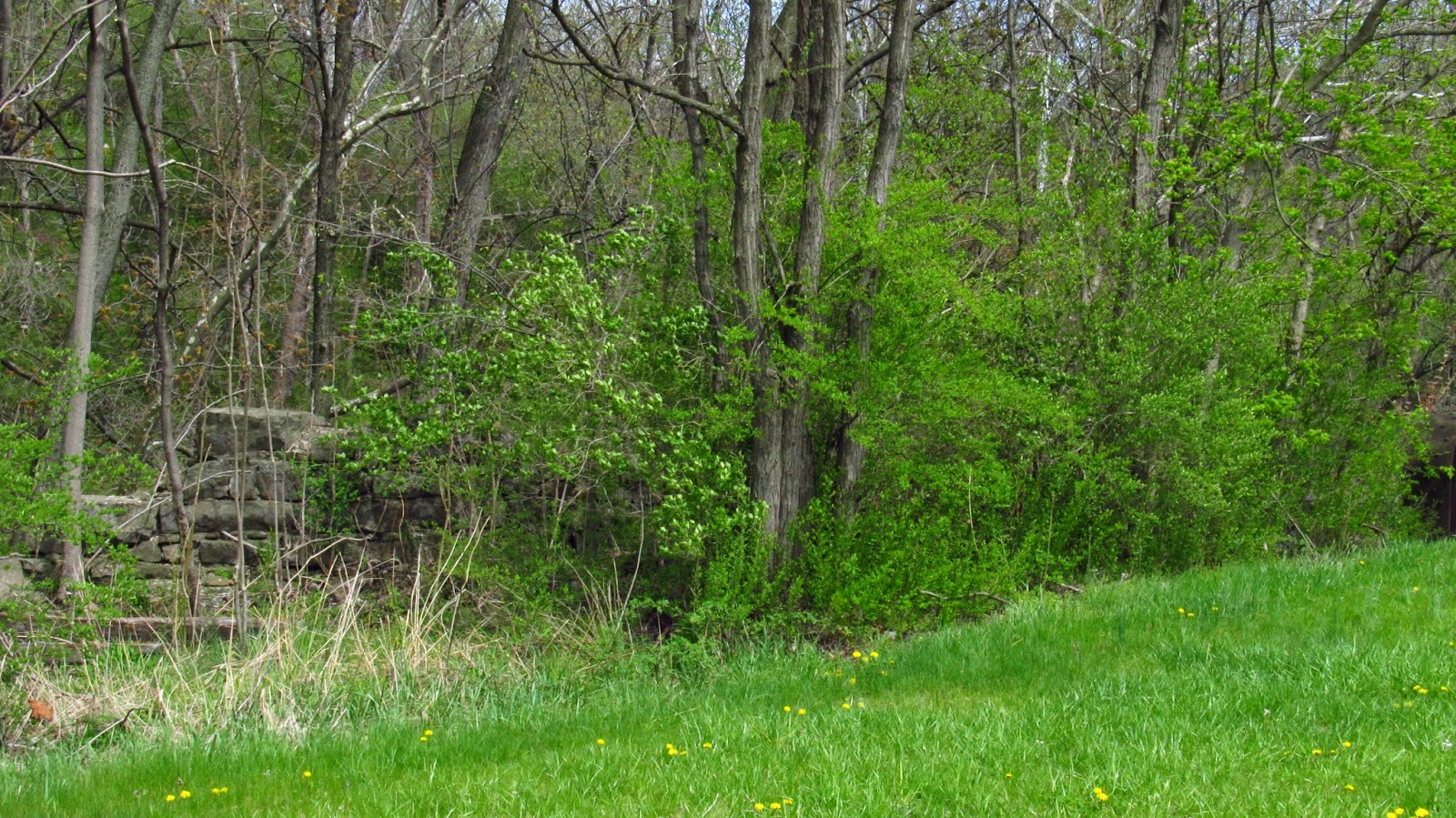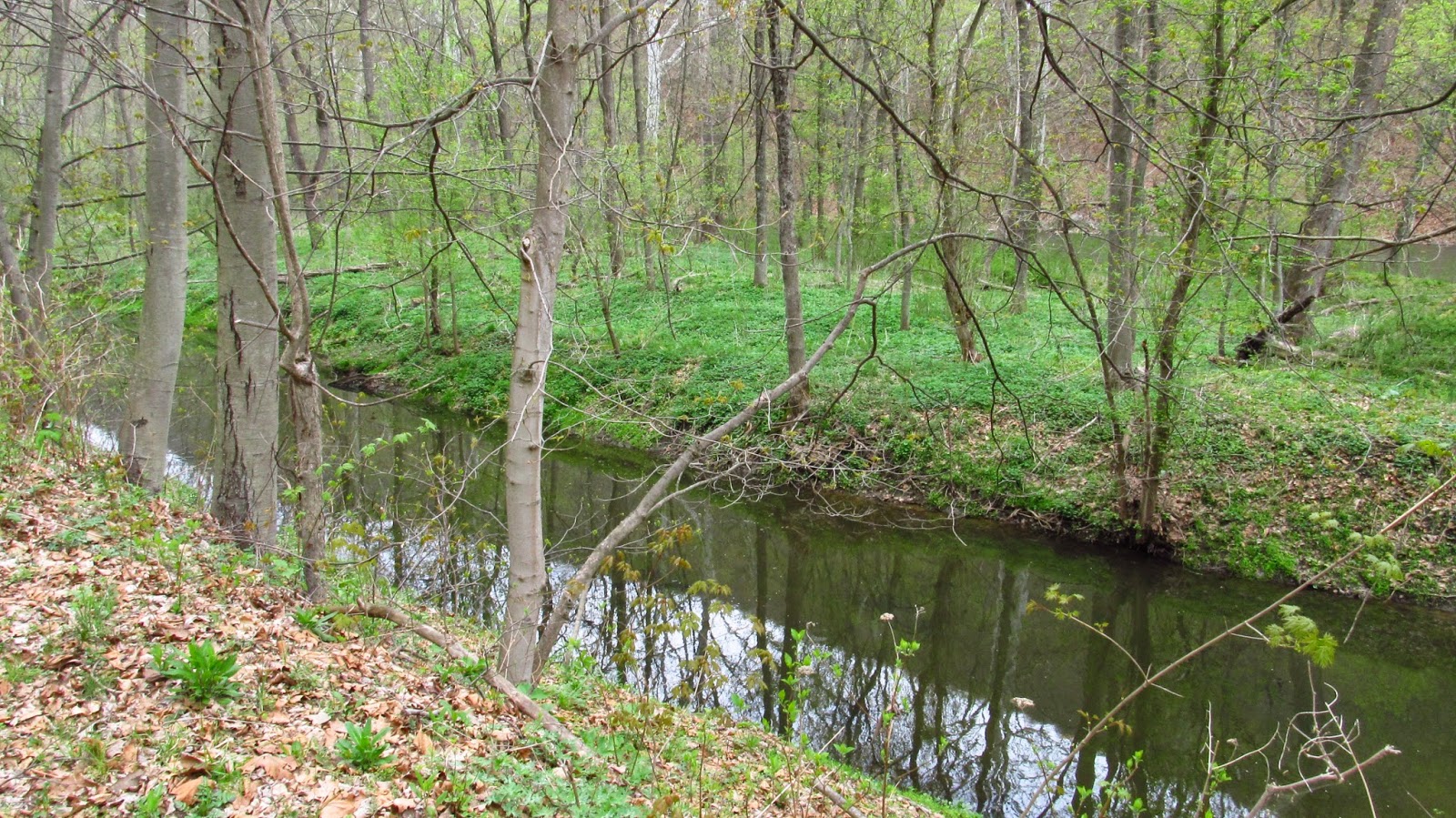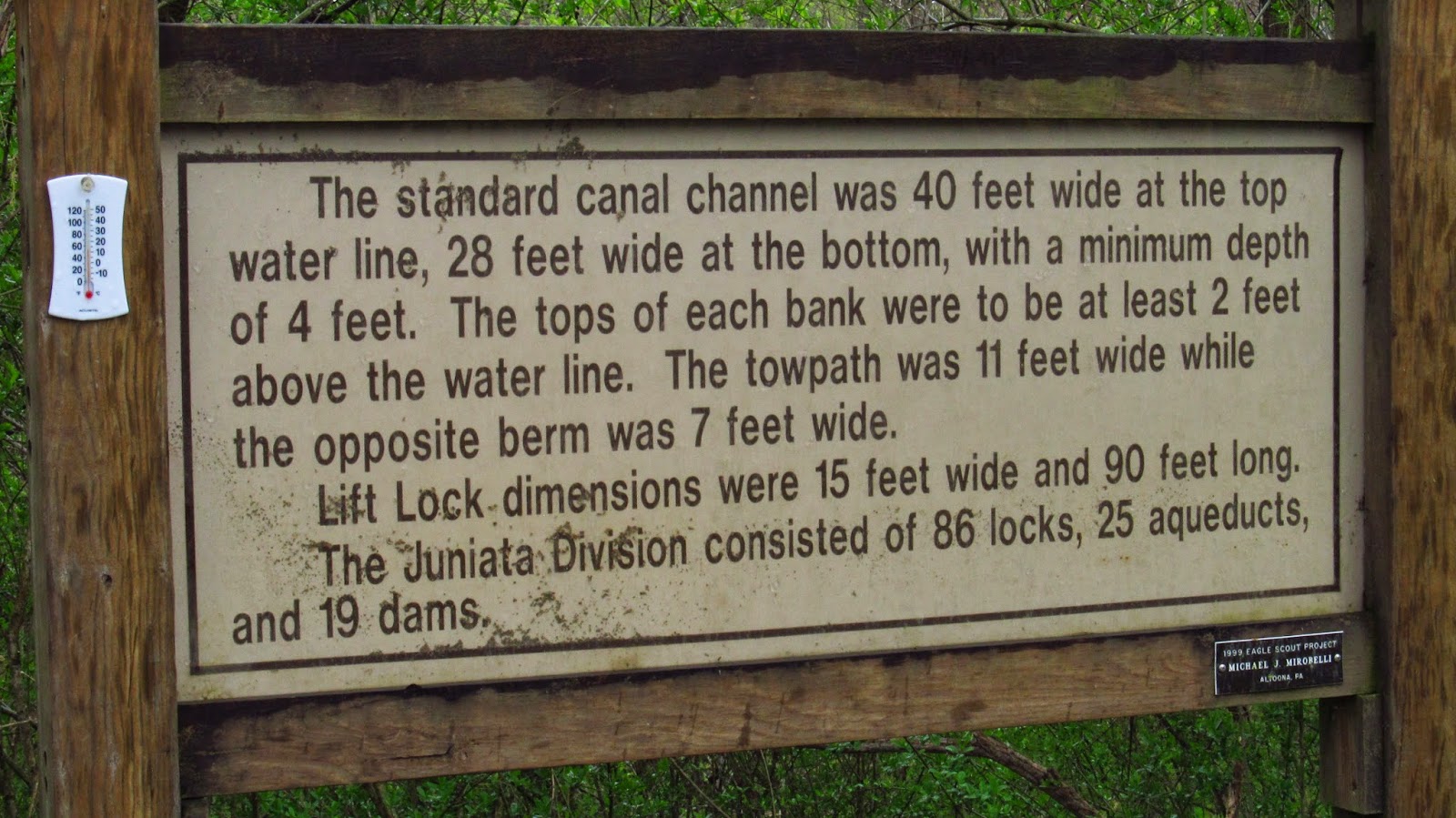Today I stepped outside of Southwestern Pennsylvania and headed out into South Central Pennsylvania. I know it goes against the title of the blog but a fella needs to expand his horizons from time to time. This is a 17 mile long trail that mainly follows the old towpath of the Pennsylvania Main Line Canal. The canal started becoming obsolete in the 1850's when the Pennsylvania Railroad purchased the canal and started laying its tracks on the old towpath.
It's all a very similar fate to Saltsburg and every other town that was on the canals main line. However, the extent of the remains in this Juniata Section of the canal greatly surpasses any I've ever seen before. There are two remains of still intact stone locks that are great examples of the overall size of these things. Also, the trail offers many remains of limestone quarries as well as the ruins of some unique old houses.
I started out at the trailhead near Canoe Creek State Park in Blair County and followed the trail to its eastern terminus at Alfarata in Huntington County. I did it backwards. There is a slight grade heading west but it's only 180 feet over 17 miles so it's not very noticeable. The rain caught up with me on the return trip too but there are a lot of pavilions along the way. Also, bring food. The only place to eat is Williamsburg, 5 miles from where I parked.
Anyway, here's the trip.
 |
| This is about 3 miles from Canoe Creek. It's an early 1900's train station that served the village of Ganister. It is currently the HQ for Rails To Trails of Central Pennsylvania. |
 |
| Heading down a little further, this rock formation sits across the river from the trail. |
 |
| Some old bridge piers in the river. |
 |
| This is heading into the town of Williamsburg. |
 | ||
| Williamsburg ball field. |
 |
| A farm outside of Williamsburg. |
 |
| The first of the old railroad bridges. |
 |
| Remains of an old wall. |
 |
| One of the bridge piers. Look closely.... |
 |
| There's a nesting goose. |
 |
| Back of the stone house. |
 |
| Another set of bridge piers. |
 |
| One of the bridge abutments. |
 |
| This is the first of the intact lock ruins. There were 86 locks on the Juniata section of the canal. |
 |
| Some of the hardware that held the enormous doors still exists. |
 |
| The wall on the left doesn't look like it in the photo but it was probably over ten feet tall. |
 |
| This is a strange concrete house. Maybe it was an office building for one of the quarry companies. A concrete house doesn't really fit the time period for a lock keepers house. |
 |
| Concrete steps in the concrete house. |
 |
| Concrete debris in the concrete basement. |
 |
| A piece of concrete dangling in the doorway. |
 |
| Looking out the window. |
 |
| Remains of one the stone quarries. |
 |
| I thought they were mining ruins but there's a massive high wall on the hill above it. |
 |
| An old quarry building. Another concrete structure. |
 |
| The quarry on the hill above the ruins. |
 |
| This is the second and most intact of the locks. It seems to be the trails centerpiece. |
 |
| It is very impressive. |
 |
| This lock is huge. |
 |
| Some of the middle falling in. |
 |
| According to the trail map, this is lock #53. |
 |
| This appears to be an old foundation for one of the lock buildings. |
 |
| Another railroad bridge crossing the Frankstown Branch of the Juniata River. |
 |
| The river was running high but still looked very clean. |
 |
| One of the railroad cuts. |
 |
| Some more quarry ruins. |
 |
| Another bridge abutment on the other side of the river. |
 |
| The other abutment. |
 |
| Some old hardware in the bridge abutment. |
 |
| A really nice section of the canal still containing water. |
 |
| This is the last quarry. Owens Quarry. |
 |
| These remains are pretty extensive. |
 |
| I'd love to see photos of when this was active. |
The following three photos are of some of the informative historical signs along the trail.



















I live in Williamsburg and know these places well. Im very proud of our little towns big history. Thanks for making us a part of your Blog.
ReplyDeleteThank you so much for looking! That was the first time I was ever in Williamsburg. It's a very beautiful town. I hope to get back up there soon!
DeleteMorgans mom here. I grew up in Williamsburg. thanks for posting this. very nice pictures and narrarive
ReplyDeleteThanks Morgans mom!!
DeleteThe first RR bridge, the extended piers on the upstream side were to the tow path bridge of the Pennsylvania Canal. The canal followed slackwater to the bridge, and entered canal trench on the Williamsburg side.
ReplyDeleteThe first abandoned piers & abutments were a RR spur that went up a valley on the other side.
The next set was the old road from Cove Forge to the ghost town of Carlim, company town of the Juniata Limestone Co, the quarry on the left about a half mile downstream from the bridge. Carlim was on the right between the bridge & quarry, was wiped out by the 36 flood. There are foundation remnants & a well preserved lock in Carlim. Your "concrete house" was one of the office buildings of JLC.
There's another ghost town, Blairfour, located on the hill to the east of the RR cut in your one photo. It was the company town of the workings across the river from it. There's an old RR spur that circles the oxbow in the river there, and old RR bridge pier & abutments cross on the NE point of the oxbow.
I first bicycled the Lower trail three years ago, and noticed how much abandoned history was in that valley. It got my interest, and I've been researching it since. I have lots of pictures & historical maps, if you're further interested, soot me an email.
mike@mikeandjackiesstore.com
Thanks for all your information Mike. I only ever got up there that one time. If the weather keeps up maybe I'll take a ride through there again while the leaves are gone. Very interesting. Thanks for sharing.
DeleteThe mineshafts are at the bottom of the pit, it was flooded by the accident that killed the miners. Here's a link to some old photos while it was in operation.
ReplyDeletehttps://www.flickr.com/photos/pennstatespecial/sets/72157629132251744/